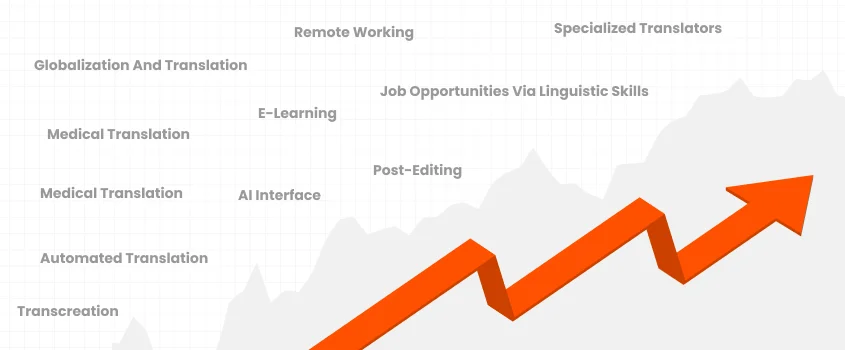What is Life Science?
By: Shahzad Bashir Posted on Thu, 05-10-2023

There are new disciplines and branches of life every day. With advanced technology, more exposure, and better research and method technologies (RMT) Life science has changed enormously in recent years. Life sciences have been experiencing a fundamental revolution including the discovery of genes, metabolic pathways, and a lot of cellular mechanisms. It further includes the invention of electronic scientific discoveries which comprise the machines which collect data and measure these. With a huge explosion of life science, fields, and branches scientists need to have the tools medical devices, and equipment that can help cope with accessing, integrating, interpreting, analyzing, and a lot more.
There has been immense research in the life sciences field in previous industries, particularly it has also accelerated the advancements in agriculture and industrial growth with the medical practice.
When it comes to biopharmaceutical products we have the following inventions as major breakthroughs
- Treating diabetes through human recombinant insulin
- Hepatitis B vaccination
- Cancer medicines, arthritis
Also not forget the last two years of the pandemic COVID-19 which made scientists and researchers on their toes round the clock to work on vaccines and formulas for COVID.
Life Science Definition
Life science is a study that involves and deals with living organisms so it is a study about the life processes of living beings such as animals, plants, and humans. It is a wide and broader life discipline that examines the living things on the earth.
It further refers to the study of all living beings such as microbes, human beings, agricultural science plants, animal sciences, genomics, proteomics, and also engineering of living organisms with multiple other disciplines of scientific study.
What is the Life Science Industry?
The industry of life science is huge and empowering. It has companies that are involved in research and development, pharmaceuticals with their manufacturers, biotechnology-based medicines and food, clinical devices, medical equipment, neutraceuticals, cosmeceuticals, food processes, and biomedical technologies. The industry further involves the role that deals with making products that may improve the life quality of living organisms by any means.
Branches of Life Science

Life science is a broad field as mentioned above and it has an indefinite number of branches with the advancements in technology we have even more as researchers and life scientists tend to make their research continue. Looking at the past we get to know there were barely three or four main branches with biology being the basic one. Today, the industry is even beyond particular numbers.
A few important branches of life science with the basic introduction are
Biology
A scientific study of living organisms.
Anatomy
The functional study of plants, animals, and humans with reference to their physical structure and placements of organs.
Astrobiology
It involves the study of the formation and presence of life in the universe.
Biotechnology
Study of living organisms and their links and combination with technology.
Biochemistry
It deals with the chemical reactions which are needed for the list to exist and function, particularly at a cellular level.
Bioinformatics
This is a study about developing methods of software tools and their restoration and organization.
Botany
It is the study that deals with plants.
Cell Biology
It deals with the study of a cellular unit and its molecular and chemical interaction inside a living cell.
Developmental biology
The study of the development of organisms starting from the zygote to a full structure.
Genetics
Genetics is the study of genes and hereditary exchanges.
Histology
It is a study of tissues.
Microbiology
It is about the microorganisms, their study, and their interaction with other living structures.
Molecular biology
It is a study of biological functions at a molecular level and their interaction with biochemistry and genetics.
Mycology
How a fungus is formed and the mechanism behind is mycology.
Neuroscience
The nervous system and its study is neuroscience.
Paleontology
We deal with prehistoric organisms in this study in this branch.
Parasitology
The study of parasites, hosts, and their relationship between these.
Pharmacology
The study of drug action is pharmacology.
Phycology
Phycology deals with the study of algae.
These are a few of the many branches that life science has with a brief introduction and the studies involved.
What is Life Science Consulting?
Life science consulting is a unique and rare career. There are individuals who work in consultations and are involved in life science consulting. They work in a hierarchy of the life science industry. The company is basically a client of that life science consultant. This consultant by offering consultancy services is expected to enable the client and company to achieve certain operational and financial goals. He helps shape organizational behavior and operations to achieve most of the organizational goals.
A life science consult may work with multiple life science companies to build a profile and gain experience. He could have valuable experience and expertise in the business and operational areas of the life science industry.
Life Science Companies

The life science industry is bigger than ever today as compared to the past. Initially, there were limited resources and a lack of technology that made it hard for life science scientists to work on research and yield the expected results. However, today with advanced technology this industry is touching the skies and even beyond. Moreover, the pace of this industry has witnessed an immense boom in the past two years of the COVID-19 pandemic.
The top ten companies related to life science are
- Johnson & Johnson
- Pfizer
- Roche
- Novartis
- Merck
- Amgen
- Gilead sciences
- Novo Nordisk
- Bristol-Myers Squibb
- Sanofi
Life Science Products

Life sciences and research in this field have been serving mankind and also working round the clock for the betterment of humanity. Scientists have worked on unlimited products and a few categories of life science products include
- Antibodies
- Biochemical reagents
- Cell culture media
- Cellular imaging
- Protein analysis reagents
- Microscopes
- Molecular biology reagents and kits
- PCR equipment and supplies
- Gel imaging and documentation systems
- Gel electrophoresis equipment and supplies
- Radiometric detection
- Microplate readers
- Drug discovery reagents
Careers in Life Science

With a rapid increase in the life sciences industry, more disciplines and research, and the new hiring and professional required for this industry are inevitable. Researchers have already witnessed growth in particular fields of life sciences such as research and development in biotechnology has been offering more jobs than ever. The surge has doubled as compared to the previous years as quoted by the U.S. Bureau of Labore Statistics (BLS).
As the report further suggests between 2010 and 2019 the employment rate in Biotech R & D grew to 5.1% making them work on offering more than 70,000 jobs.
Similarly in Massachusetts which is home to the nation’s top bio cluster centered in Boston and Cambridge, MA, the life sciences workforce is expected to grow by 16% ending up offering 12,000 opportunities for life sciences careers by the year 2024. These details have been mentioned by the Massachusetts Biotechnology Education Foundation in their 2019 report. Moreover, more opportunities include the jobs of
Epidemiologists – Public health professionals
Biomedical engineers – Work on combining engineering principles with medical science to invent equipment, devices, and software.
Genetic counselors – Their job involves assessing an individual or family’s risk of having multiple inherited conditions including genetic disorders and birth defects.
Microbiologists – The study of bacteria, viruses, algae, and fungi and their interaction with the environment.
Wildlife biologists and zoologists – They study the animals and wildlife creatures and also conduct their research on their interaction with ecosystems.
Calculus for Life Science
Calculus basically comes from mathematics and this deals with a study of measuring rates of change. It basically involves the role of mathematics in the life sciences field and industry.
It tells how calculus can be used in conservation biology. Calculus works on scanning the habitat fragmentation effect on populations and its statistics.
Calculus can also play its role in the occurrence of an influenza epidemic by scanning the antigenic change in epidemiology.
As for physiology, calculus can play a vital role in blood pressure’s reliability on the radius of an artery.
The professional who deals with calculus and its role in life sciences are mathematicians in different disciplines and expert in their fields.
Is Chemistry Life Science?
Chemistry is a study that deals with matter and further analyses its structure, properties, and behavior which is observed after the change in chemical reactions. It doesn’t fall into the disciplines of life sciences directly. However, it takes ad the bridger which gaps the differences between physical and life sciences. While life sciences deal with the disciplines and domains that deal with the lives of any kind of living organism, physical science explores the dimensions and solid structure of non-living.
However, chemistry is inevitable to understand the life sciences. For instance, a chemical reaction also occurs in living beings which we study in biochemistry which is a domain of life sciences. Therefore, a better understanding of it may lead to a better study of life sciences.
Life Science Technology
Life sciences is a successful industry and an industry of recent times that has been all over there. It is a broad field that has expanded its domains and fields with the advancement of technology. Life science covers multiple fields in reference to technology.
The top six of these are
- Bioinformatics
- Biological data analytics
- Advances in biomaterials
- Bioelectronics
- Biomedical engineering
- Neuroscience sector
Top Life Science Consulting Firms
Like all other fields, life sciences also have consultants in the industry. These are the people who start their careers as consultants and end up affiliated with the companies or making one.
The leading consulting firms for life sciences are
- McKinsey & Company
- Alfa consulting
- Next continent
- NMS consulting
- Deloitte
- EY
- Bain and Company
- Alvarez & Marsal
- KPMG
- Bearing point
What is Translation in Life Science?
Considering the whole article and the rise and success of the industry it answers all the main questions about life science. This industry since the time of its inception is growing and there is no looking back for it. COVID-19 and its two initial years have also kept life science researchers, on their toes where they worked dedicatedly to confront this virus and come up with an effective vaccine for it. These developments make the translation a vital part of the industry. Research that is being conducted in the US or some Western countries can not be conveyed in the same language to Asian countries or other developing countries where people speak different languages.
The translation could bridge the gap for users to study manuals coming with medical equipment from different countries, medicine labels, and packaging, and a lot more. It is equally important for the life science experts as well as the people on the other end.
Final Words
The life sciences industry deals with the various disciplines and domains that are involved with the study of living beings. The industry is on boom these days offering more employment opportunities with consultancy firms as well. It has many branches which are connected to the studies of living organisms. The collaborations in life sciences have made them produce many products as well. Moreover, all these developments imply how life science translations are significant to cater to the masses who do not speak the same language.

Finland is a beautiful country in Northern Europe. It is famous for its woodlands that make it the most densely
Read more
If you are an avid internet user (which you most probably are, you must be aware of the popular myth
Read more
To get success in every aspect of life, communication is very important. Do you want to impress people with your
Read more
Africa is the second largest and second most populous continent. As recent statistics suggest, 1,486,275,887 is the current population of
Read more
dxf: DXF is a CAD data file format developed by Autodesk for CAD data exchange between AutoCAD and other software. docx:
Read more
Mars Translation can help you extract the texts in a DXF file and convert them into a XML file so
Read more
Mars Translation can help you extract the texts in a DWG file and convert them into a Word file so
Read more
No state on the western side of the globe can compare the strategic geographic location, diverse multilingual workforce, and attention
Read more
San Diego is California's second-largest city, and it has a population of 1.3 million from which three million residents are
Read more